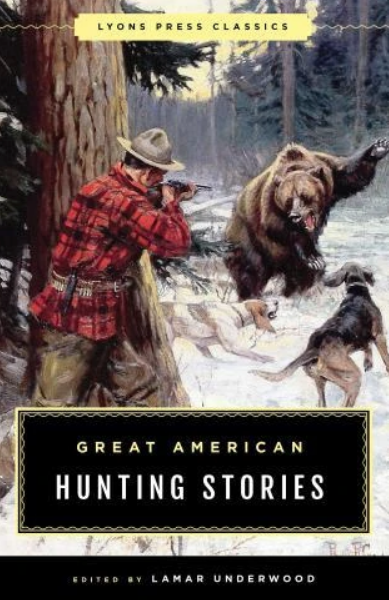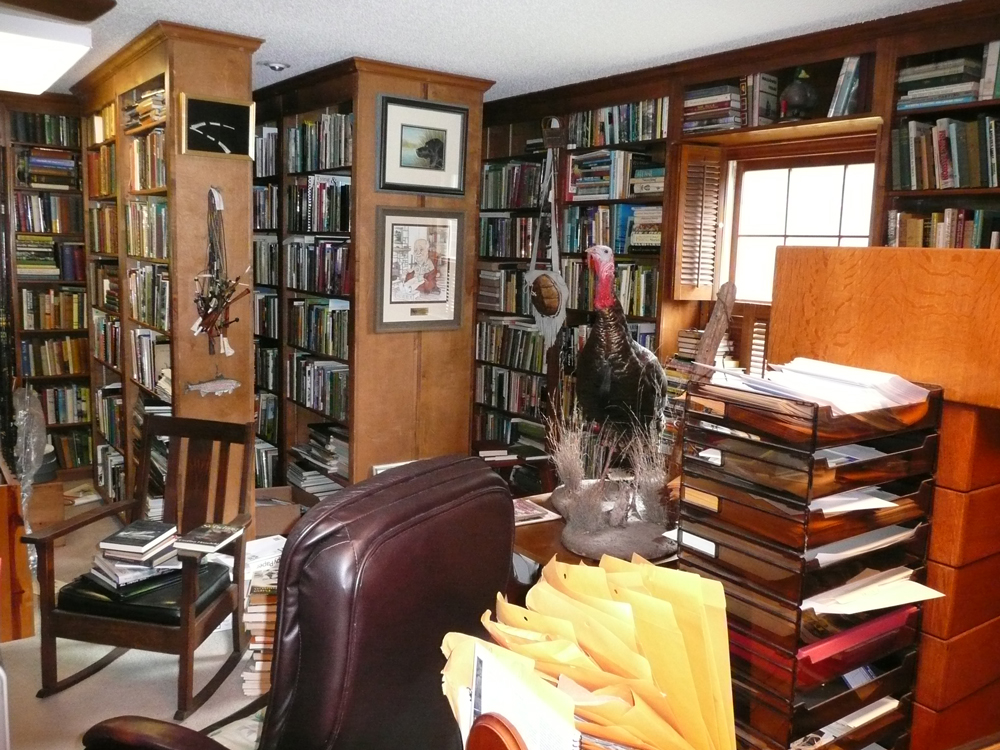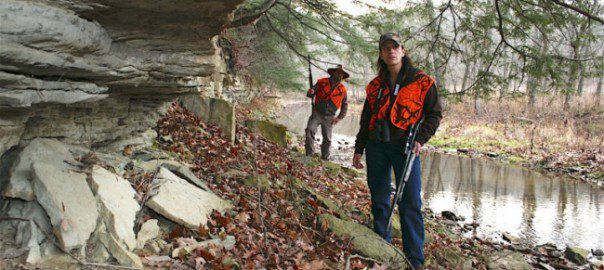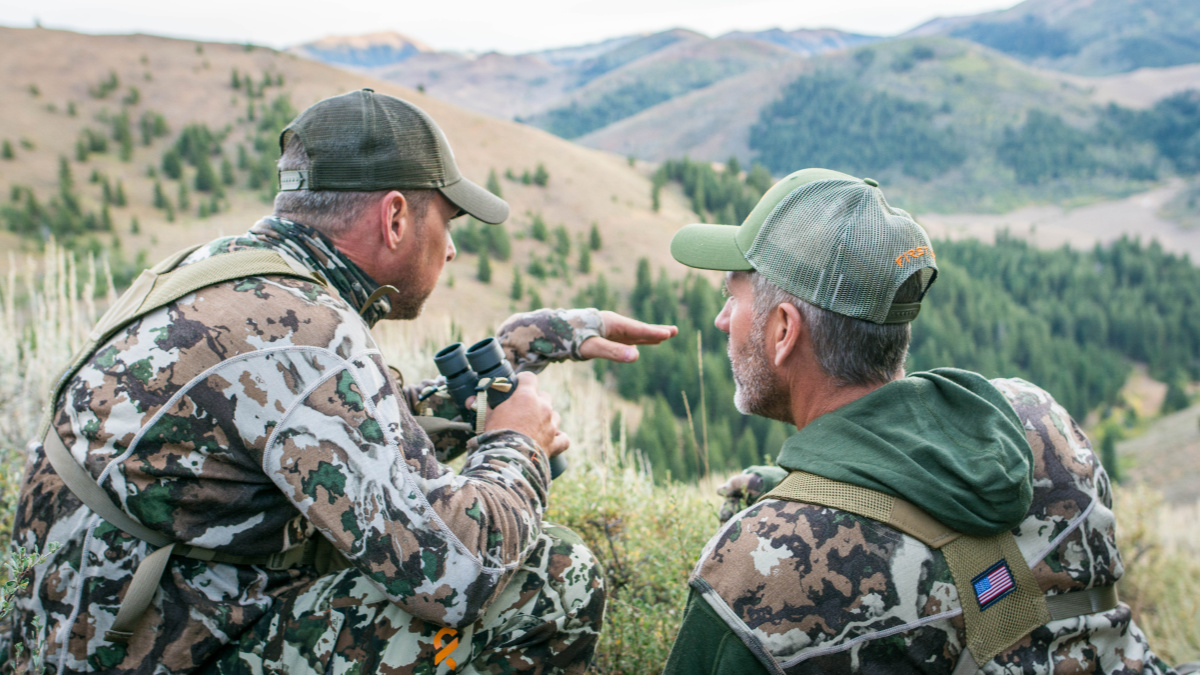Apply these tips for organizing your sporting library. You will take collector’s pride in knowing you have your library shipshape and orderly.
When Sporting Classics Daily was just getting started, I offered some random thoughts on forming a collection of sporting books. However, as a conversation with Duncan Grant, who was the driving force beyond the launch of this website, pointedly reminded me, I’ve never shared anything about how to organize a sporting library.
For any collection that consists of more than a few dozen volumes, that’s a matter of moment. As a sportsman’s book collection expands to hundreds or even thousands of volumes, it becomes increasingly critical. If you don’t have some system of organization, you will soon reach a point where you are unable to locate a volume without a search of the sort that consumes time and builds frustration. Expecting someone else to figure out an unpredictable system is more problematic—to the umpteenth degree.
With that in mind, here are some thoughts on organization. Most have grown out of a lifetime of personal experience, one that has involved ongoing reassessment of how to arrange things and constant rethinking or second-guessing my scheme of the moment.
1. Avoid Arranging in Alphabetical Order
Unless you have an encyclopedic memory or a quite small holding, forget what is perhaps the simplest of all approaches—namely, shelving your entire collection in alphabetical order by author. For starters, it’s unlikely you can readily bring to mind the author of all your books, and often you may just be seeking books dealing with a particular subject area rather than by a specific author.
2. Group Books by Publisher or Series
Grouping books from a single publisher or those in a series can be quite useful. For example, I have all my Derrydale Press originals, Small-Arms Technical Publishing Company and Amwell Press editions together. In the latter case, the arrangement is further delineated by books in the various Amwell series—the African Hunting Heritage, High Country Hunting Heritage, National Sporting Fraternity books and other imprints from the Jim Rikhoff-Monica Sullivan operation. Additionally, the limited-edition volumes are separate from the trade edition ones, although I haven’t made any special attempt to collect the latter.
3. Bring Collections Together
A related approach brings “collections” together. There are numerous examples, but on a personal level this includes The African Collection and The Premier Collection, which emerged from beneath the Sporting Classics umbrella; imprints from Books of Rhodesia (later Books of Zimbabwe); and a welter of series from the late Victorian and Edwardian eras, such as the Fur and Feather Series, The Badminton Library of Sports and Pastimes, the Country Life Library of Sport and the Lonsdale Library.
4. Create Author-Focused Shelves
For any author in whom you have a special interest, especially ones with prolific output or who have been the subject of books, having everything in one place makes sense. In my case, this translates to a number of author-focused shelves, with those covered including, among others: Archibald Rutledge (he was especially prolific, and an entire bookcase is devoted to him), Frederick C. Selous, Theodore Roosevelt, Nash Buckingham, Jack O’Connor, Robert Ruark, George Bird Evans, Horace Kephart and Gene Hill. I also have non-sporting authors, such as Winston Churchill and Sir Richard F. Burton, in groupings of their own.
5. Expand Author Arrangement by Subject
A logical expansion of the arrangement by author is arrangement by subject. That is the way the old Dewey Decimal System worked. My own subject groupings range quite widely and include books on: turkey hunting, ones devoted to fly fishing, general fishing, firearms and shooting, deer hunting, upland hunting, hunting dogs, African big-game hunting, Asian big-game hunting, works on sporting art, travel, and exploration (mostly in Africa, a particular area of personal interest) and a few other subject areas. Three especially large sections, although to some degree each of them falls outside the realm of sport, contain books on the Great Smokies, cookbooks and biographies and autobiographies.
There will always be issues connected with deciding exactly where a given book belongs. Does, for example, a biography of Robert Ruark (there are three of them) belong in the section devoted to him, the African books, those on hunting and fishing, in the biographies or elsewhere? Conundrums of that sort surface constantly, and they are best resolved by coming up with your own system and sticking to it consistently.
6. Group Printed Ephemera
If you collect printed ephemera—pamphlets, brochures, ads, post cards, old book catalogs and the like—grouping it together probably makes sense, although display or ready access can pose problems.
7. Have a Stash of Your Favorites
Although I disposed of most of my academic library decades ago, I did retain certain volumes, almost all of them related to sub-Saharan African history. Similarly, I’m a sufficiently voracious reader to delve into fiction with some regularity. Most works of fiction come and go, but I’ve got a stash of first-edition Wilbur Smiths filling a couple of shelves, along with everything by a handful of other personal favorites such as Marjorie Rawlings, Stephen Hunter, Ferrol Sams and the Flashman series by George Macdonald Fraser. All of these non-sporting items have their special places.
8. Dedicate a Section to Reference Works
Most serious sporting bibliophiles will reach a point, at some juncture, where they find works of reference helpful. I own perhaps 75 to 100 bibliographies—far more than most collectors want or need, but they regularly help me in my research and often provide ready answers to questions where I don’t trust the Internet. (So-called “facts” available on the Internet are often highly suspect. I would wager a substantial sum that I can spend a day researching on Wikipedia and point out not one or two but dozens of factual errors.)
Mind you, a fair amount of my production as a research scholar involved bibliographical work—I am the author of several book-length bibliographies of a scholarly nature, as well as one on the literature of turkey hunting, and I once served as series editor for a collection of reference works dealing with European imperial expansion—so I’m more interested in this type of book than most. Also, the fact that I sell out-of-print books makes bibliographies of special significance to me.
9. Display Your Magazines
Then there’s the matter of magazines. I hold complete or very nearly complete runs of a number of outdoor-related magazines—Sporting Classics; Turkey & Turkey Hunting (and its variously entitled predecessors); Turkey Call and its successor, Turkey Country; South Carolina Wildlife; and for the time period of 1930-1980 the so-called “big three,” Outdoor Life, Sports Afield, and Field & Stream. Some of these magazines are housed in specially made slipcases and others in binders that sit on my shelves, but the hundreds upon hundreds of copies of the “big three” simply take up too much space and are used too infrequently to be shelf-stored. They are in boxes in a storage shed.
10. Make it Your Own!
The coverage above provides nothing approaching a definitive answer on how to arrange your collection. Also, for most folks who read this, the solution is likely to be somewhat easier than my personal situation. That’s because I have a personal library numbering many thousands of books, one far larger than that of any but the most avid of collectors (a sporting collection of a thousand books is a large one). Still, hopefully you will come away with some food for thought on organizing your personal sporting library, and don’t forget that aesthetics and personal taste should enter into the picture.
I have dozens of limited-edition, slipcased books prominently displayed, and in what has to be reckoned as a venture into vanity, a group of works which I have written, edited or contributed to in some significant way adorn the top of a table, along with some memorabilia from my years as a sporting scribe. In the former case, there’s a bit of a bibliophile’s eye-candy appeal, while in the latter instance I can look at my own works and realize there’s been at least a modicum of literary productivity in my life.
Bonus Tip: Write a Complete List of All Your Books
In the final analysis, organizing your sporting collection involves a mixture of personal taste, practicality and what suits your particular needs. Whatever approach you take, though, it wouldn’t be a bad idea to have a complete list of all your books. I must confess I don’t have one, and the explanation is that I didn’t start such a list when I first began collecting as a young man, and the thought of the amount of work such a compilation would require today scares the bejeebers out of me. I do have multiple photos of my sporting library, and for insurance purposes that is something. You might want to consider doing the same.
Bibliomania is a marvelous and mystifying malady, and to me one of its myriad joys is arranging and rearranging books, being able to pluck a desired volume from the shelves without so much as a moment to ponder where it might be, and taking quiet collector’s pride in knowing you have your sporting library shipshape and orderly.
Note: The Sporting Classics Bookstore offers a wide array of books to add to your sporting library, from classic authors, to compilations, reference works, back issues of Sporting Classics magazine and everything in between.
 A superb collection of stories that captures the very soul of hunting. For hunters, listening to the accounts of kindred spirits recalling the drama and action that go with good days afield ranks among life’s most pleasurable activities. Here, then, are some of the best hunting tales ever written, stories that sweep from charging lions in the African bush to mountain goats in the mountain crags of the Rockies; from the gallant bird dogs of the Southern pinelands to the great Western hunts of Theodore Roosevelt. Great American Hunting Stories captures the very soul of hunting. With contributions from: Theodore Roosevelt, Nash Buckingham, Archibald Rutledge, Zane Grey, Lieutenant Townsend Whelen, Harold McCracken, Irvin S. Cobb, Edwin Main Post, Horace Kephart, Francis Parkman ,William T. Hornaday, Sc.D, Rex Beach and others. Shop Now
A superb collection of stories that captures the very soul of hunting. For hunters, listening to the accounts of kindred spirits recalling the drama and action that go with good days afield ranks among life’s most pleasurable activities. Here, then, are some of the best hunting tales ever written, stories that sweep from charging lions in the African bush to mountain goats in the mountain crags of the Rockies; from the gallant bird dogs of the Southern pinelands to the great Western hunts of Theodore Roosevelt. Great American Hunting Stories captures the very soul of hunting. With contributions from: Theodore Roosevelt, Nash Buckingham, Archibald Rutledge, Zane Grey, Lieutenant Townsend Whelen, Harold McCracken, Irvin S. Cobb, Edwin Main Post, Horace Kephart, Francis Parkman ,William T. Hornaday, Sc.D, Rex Beach and others. Shop Now




